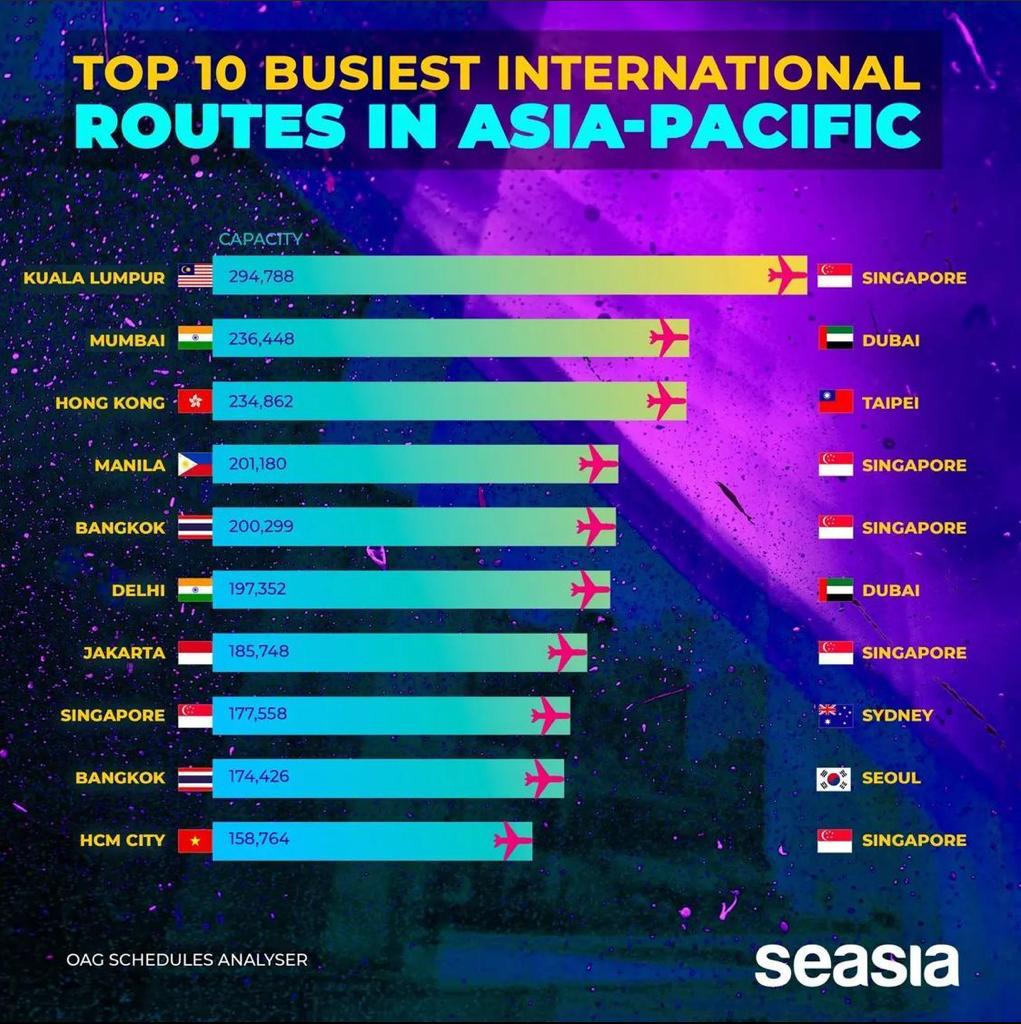Routes take a look at the busiest routes in the Asia-Pacific region this month and how the picture has changed compared with pre-pandemic levels.
Although the Asia-Pacific area is still catching up on travel following the epidemic, there is growing momentum as more travel restrictions are being lifted by the governments.
According to data from OAG Schedules Analyser, there were approximately 164.7 million tickets available to, from, and within the region in July 2022, an increase of 22.6% from the same month a year prior and 16.2% from June 2022.
Despite this, the total for July is still 19.8% lower than levels prior to the outbreak.

This month, domestic markets account for 82.3% of the capacity that is available, returning to the July 2019 level of 99.5%. The international capacity, which is currently 27.6 million seats, is 59.3% smaller than it was three years ago, but since June 2022, it has increased by 3.9 million seats.
The top 10 busiest routes in the Asia-Pacific region according to scheduled capacity are all domestic routes, with Seoul Gimpo (GMP)-Jeju being the busiest of them all (CJU). The overall capacity of the South Korean market, which is 1.4 million two-way monthly seats, is 8.1% lower than it was before to the pandemic.
When comparing the top 10 busiest routes in July 2019 and July 2022, it can be seen that Hanoi (HAN)-Ho Chi Minh City (SGN) has moved up to second place, offering 12.8% more tickets currently than it did three years ago.
The Hanoi and Routes Asia 2022 host Da Nang (DAD) airports in Vietnam have also risen into the top 10, moving up from the 18th busiest airport in July 2019. According to OAG data, there are 41.2% more seats today than there were three years ago.
The internal leisure route connecting Indonesia's capital Jakarta (CGK) and Denpasar (DPS), the primary entry point to Bali, also makes the top 10. This month, there are 645,602 two-way seats available, up 25.9% from July 2019.
Dropping from the ninth and tenth busiest at this time three years ago to the 52nd and 12th busiest at this time, respectively, are Hong Kong (HKG-Taiwan Taoyuan (TPE) and Tokyo Haneda (HND)-Osaka (ITM).
The effects of COVID-19 travel limitations on Hong Kong are made clear when only global markets are considered, as well as how Singapore's (SIN) decision to adopt a more liberal policy has affected Hong Kong's recovery.
In July 2019, Hong Kong had six of the top 10 international routes with the highest capacity, but as of now, there is only one Hong Kong route in the top 10. In July 2022, the airport's total capacity will be 1.3 million two-way seats, down from 8 million three years prior.
Singapore is currently represented on six of the top ten routes, including the busiest international route. This month's total capacity from SIN is 57% higher than it was before the outbreak.
Two international routes to Dubai (DXB) from Mumbai (BOM) and Delhi (DEL) in India have joined the top 10, with 14.2% more seats available between DEL and DXB and 21.3% more seats sold between BOM and DXB compared to July 2019.
Source: RoutesOnline.com


















